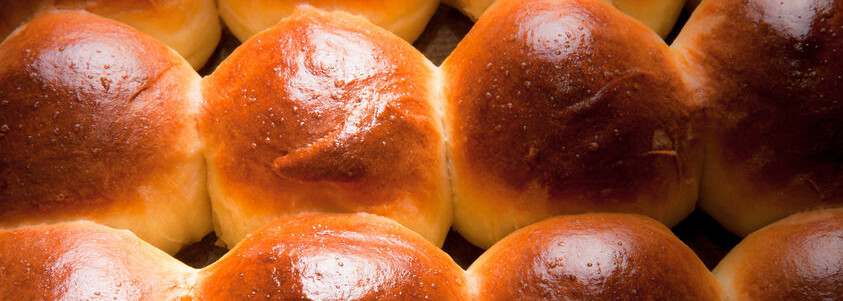
Freshly baked rolls only taken out of the oven. Toned.
While everyone may be heading out on vacation, our commercial baking community, Baking Industry Professionals, is always at work! This month, plenty of interesting discussions were had, and one of the highlights was a baker looking to troubleshoot producing brioche with ghee. As a quick refresher, brioche is a yeast-raised product enriched with butter and eggs and sometimes sweetened with sugar that has a flaky, almost pastry-like texture. And ghee, also known as clarified butter, is anhydrous milk fat that has been separated from the nonfat milk solids and water normally found in butter.
To Ghee or Not to Ghee
While ghee and regular butter can be used in some of the same applications, the absence of water alters the consistency, stability, and shelf-life of baked goods. Additionally, the reduced whey content can have significant effects on the final product. This can be directly attributed to the fact that clarified butter is pure fat and doesn’t crystalize in the same way that regular butter does. This thereby changes the cell structure within the dough, which can lead to larger, more open cells.
Although substituting ghee for regular butter can have some minor effects on the texture of brioche, it can make it much richer because there is nearly 18% more fat! This ingredient substitution can absolutely be done, but as our community pointed out, clients and cost are two major factors. Knowing your client base will help you have a better idea of whether or not they will appreciate the change in flavor as well as price. In the bakery business, it is always important to be sure you can recover any costs associated with ingredient substitutions to maintain profitability.
Do you want to join in on the conversation? Become part of the Baking Industry Professionals page on LinkedIn or Facebook today!

